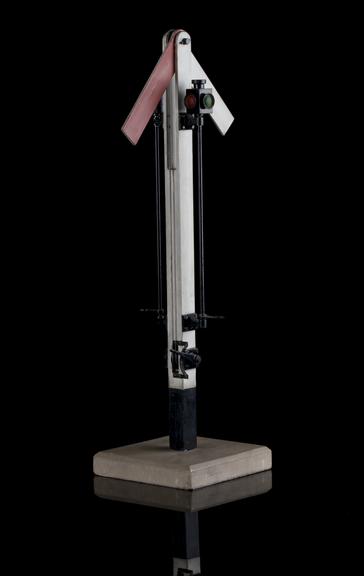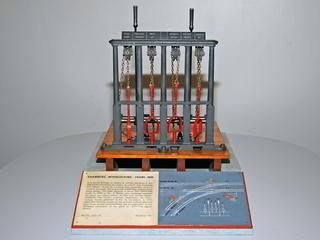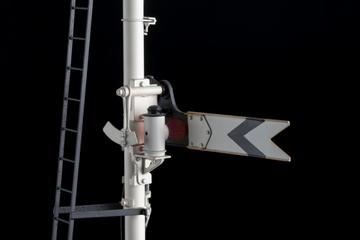
Model of Gregory's semaphore signal
- Made:
- c.1912






Model signal, scale 1:16, London & Croydon Railway, first semaphore signal, by C H Gregory, 1841, made c.1912.
Charles Hutton Gregory was a civil engineer who trialled the first semaphore railway signal at New Cross on the London and Croydon Railway in 1841. The original design was a 3-position lower quadrant signal, meaning the signal arm could be set by the signaller in one of three ways to give a specific instruction to locomotive crews, and moved in a downwards direction. The arm was attached to a pivot mounted on a post and controlled using levers near the base.
When set at ‘danger’, the position of the signal board was at 90 degrees to the post. The second ‘caution’ position was at 45 degrees to the post, while the third ‘line clear’ position saw the arm slotted inside the post. The 1876 Abbots Ripton disaster demonstrated that the lack of a positive indication for safety was dangerous, and so the 'caution' position was adopted to show ‘clear’. This model has signal arms for either direction as well as colour lamps for signalling at night.
Born in 1817, Gregory became an engineering consultant for several domestic and overseas railway projects, including lines in India and South Africa. In 1882, he became a member of the Alison Committee, which reported on the practicalities of closing a Channel Tunnel for defence reasons if built. He died in 1898.
Details
- Category:
- Railway Models
- Object Number:
- 1912-45
- Materials:
- metal (unknown), wood (unidentified) and paint
- Measurements:
-
overall: 350 mm x 100 mm x 100 mm,
- type:
- model
- credit:
- Cussons, G. Ltd.




